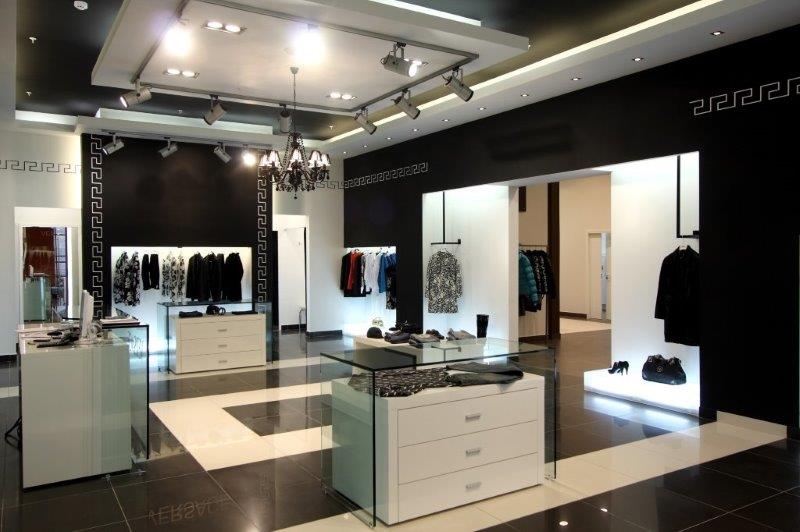LED drivers are electronic devices that regulate the voltage and current supplied to LEDs. LEDs require a specific voltage and current to function correctly, and LED drivers ensure that the LED receives precisely that. LED drivers can be integrated into the LED fixture itself or installed as a separate device.
Get our products: LED Drivers & Power Supplies
LED Drivers & Power Supplies
How do LED Drivers work?
LED drivers convert the high voltage, low current AC power supply that is provided by the mains, into the low voltage, high current DC power that is required by the LED. This is achieved through a process called Pulse Width Modulation (PWM), where the driver switches the power on and off at a high frequency to control the amount of power delivered to the LED. This allows the driver to maintain a stable voltage and current output to the LED.
Types of LED Drivers
There are two main types of LED drivers: constant-current drivers and constant-voltage drivers.
- Constant-current drivers regulate the current that is supplied to the LED, while the voltage can vary depending on the number of LEDs connected in a circuit. This type of driver is best suited for high-power LED applications, where it is essential to maintain a stable current output to prevent damage to the LED.
- Constant-voltage drivers, on the other hand, regulate the voltage that is supplied to the LED, while the current can vary depending on the number of LEDs connected in a circuit. This type of driver is best suited for low-power LED applications, such as accent lighting or decorative lighting.
What are Power Supplies?
Power supplies, also known as LED power adapters or LED transformers, are devices that convert the incoming AC power from the mains into the appropriate DC power required by the LED system. They provide a stable and regulated power source to ensure optimal performance and longevity of the LEDs.
How do Power Supplies work?
Power supplies work by taking the alternating current (AC) input from the mains and converting it into direct current (DC) output. They typically consist of a rectifier, which converts AC to DC, and a voltage regulator, which maintains a constant output voltage. The regulated DC power is then supplied to the LED system, enabling it to function efficiently and reliably.
Types of Power Supplies
There are different types of power supplies available for LED systems, including:
Constant Voltage Power Supplies:
These power supplies provide a fixed voltage output, typically 12V or 24V. They are commonly used in applications where multiple LEDs are connected in parallel and require the same voltage.
Constant Current Power Supplies:
These power supplies provide a fixed current output, ensuring that each LED receives the correct amount of current. They are suitable for applications where LEDs are connected in series, and maintaining consistent current is essential.
Dimmable Power Supplies:
Dimmable power supplies allow for adjusting the brightness of the LED system. They are equipped with additional circuitry to enable compatibility with dimming controls, providing flexibility in lighting intensity.
Waterproof Power Supplies:
These power supplies are designed to withstand exposure to moisture and water. They are commonly used in outdoor lighting applications or environments where moisture resistance is necessary.
Differences between LED Drivers and Power Supplies
While LED drivers and power supplies both play crucial roles in powering LEDs, there are some key differences between them.
Compatibility with LEDs
LED drivers are specifically designed to regulate the voltage and current requirements of LEDs. They ensure that the LED receives the optimal power supply it needs to function correctly. On the other hand, power supplies are more general-purpose devices that can be used for various electronic applications, including LEDs.
Voltage and Current Regulation
LED drivers primarily focus on regulating the current supplied to the LED, ensuring it remains constant. In contrast, power supplies primarily regulate the voltage output, while the current may vary depending on the load.
Dimming Capabilities
LED drivers often have built-in dimming capabilities or are compatible with external dimmers, allowing for precise control over the brightness of the LEDs. Power supplies, especially dimmable ones, can also offer dimming functionality, but it’s not their primary function.
How to Choose the Right LED Driver or Power Supply
When selecting an LED driver or power supply for your lighting application, several factors should be considered:
Voltage and Current Requirements
Ensure that the driver or power supply is compatible with the voltage and current requirements of your LED system. It is essential to match the driver’s output voltage and current rating to the specifications of your LEDs to ensure optimal performance and longevity.
Dimming Requirements
If you require dimming capabilities for your LED system, choose a driver or power supply that supports dimming functionality. Verify compatibility with the dimming method you intend to use, whether it’s 0-10V dimming, PWM dimming, or other control protocols.
Environmental Considerations
Consider the environmental conditions in which the LED driver or power supply will operate. For outdoor applications or environments with high levels of moisture or dust, opt for drivers and power supplies with appropriate IP (Ingress Protection) ratings to ensure their durability and reliability.
Best Practices for Installing LED Drivers and Power Supplies
Installing LED drivers and power supplies can be challenging and potentially dangerous if not done correctly. Follow these best practices to ensure a safe and effective installation:
Electrical Safety
Always ensure that the power is disconnected before installing or replacing LED drivers and power supplies. Wear appropriate protective gear and follow standard electrical safety procedures when working with live wires.
Proper Wiring Techniques
Follow proper wiring techniques when connecting the driver or power supply to the LED system. Ensure that the wiring is rated for the current and voltage requirements of the system, and avoid making unnecessary bends or splices.
Heat Dissipation
LED drivers and power supplies can generate a significant amount of heat, which can reduce their lifespan and damage surrounding components. Ensure that the driver or power supply is installed in a location with adequate ventilation and heat dissipation.
Troubleshooting Common Issues with LED Drivers and Power Supplies
LED drivers and power supplies can experience several issues that can affect the performance of the LED system. Here are some common issues and troubleshooting tips:
Flickering or Unstable Light Output
Flickering or unstable light output can be caused by several factors, including a faulty driver, incorrect wiring, or an incompatible dimming control. Check the wiring and dimming control compatibility and replace the driver if necessary.
Overheating
Overheating is often caused by insufficient heat dissipation or an overloaded driver or power supply. Ensure that the driver or power supply is appropriately rated for the load and installed in a location with adequate ventilation.
Compatibility Issues
Compatibility issues can arise when the driver or power supply is not matched with the LED system’s voltage and current requirements. Ensure that the driver or power supply is appropriately rated and compatible with the LED system.
Benefits of Using LED Drivers and Power Supplies
Using LED drivers and power supplies offer several benefits for lighting systems, including:
Energy Efficiency
LED drivers and power supplies are highly energy-efficient, reducing overall energy consumption and costs compared to traditional lighting systems.
Longevity
LED drivers and power supplies can extend the lifespan of LED systems by providing a stable and regulated power supply, reducing the risk of damage and failure.
Versatility
LED drivers and power supplies offer versatility in lighting design, allowing for dimming control and flexibility in light intensity and color.
Future Developments in LED Driver and Power Supply Technology
LED driver and power supply technology continue to evolve and improve, with several promising developments on the horizon, including:
Smart Lighting
Smart lighting systems use sensors and software to adjust lighting output automatically, based on occupancy, time of day, or other factors. LED drivers and power supplies are becoming increasingly intelligent, enabling integration with smart lighting systems.
Wireless Control
Wireless control enables remote monitoring and control of lighting systems, improving efficiency and flexibility. LED drivers and power supplies with wireless capabilities are becoming more prevalent, allowing for easy integration with wireless lighting controls.
Energy Harvesting
Energy harvesting technology uses renewable sources, such as solar or wind power, to generate electricity, reducing energy consumption and costs. LED drivers and power supplies with energy harvesting capabilities are being developed, offering significant energy-saving potential.
Conclusion
In conclusion, LED drivers and power supplies play a vital role in powering and controlling LEDs. They ensure stable voltage and current regulation, enable dimming capabilities, and contribute to the energy efficiency and longevity of LED lighting systems. By understanding the differences between LED drivers and power supplies, considering the right specifications for your application, and following proper installation and troubleshooting practices, you can create a reliable and efficient lighting setup.
FAQs
Can I use any power supply for my LED lighting system?
While some power supplies may work with LEDs, it is recommended to use a power supply specifically designed for LED applications. LED power supplies provide the necessary voltage and current regulation required for optimal LED performance and longevity.
Can I dim any LED using an LED driver?
Not all LEDs are dimmable, and not all LED drivers support dimming functionality. Ensure that both the LED and driver are compatible with dimming capabilities if you require dimming control for your lighting system.
Can I install LED drivers and power supplies myself, or should I hire a professional?
If you have knowledge and experience in electrical installations, you can install LED drivers and power supplies yourself. However, if you are unsure or uncomfortable with electrical work, it is advisable to seek the assistance of a qualified electrician or professional installer.
How long do LED drivers and power supplies typically last?
The lifespan of LED drivers and power supplies can vary depending on factors such as quality, usage conditions, and maintenance. On average, high-quality LED drivers and power supplies can last anywhere from 50,000 to 100,000 hours of operation.
Are LED drivers and power supplies compatible with all types of LEDs?
LED drivers and power supplies come in different variations to accommodate different types of LEDs. It is essential to select drivers and power supplies that match the voltage and current requirements of your specific LED system to ensure compatibility and optimal performance.



Recent Comments